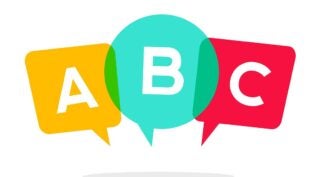
So in my last three posts, I’ve written about a simple one-minute business description that every business owner should know, which I’m calling “the elevator speech” because that’s what they call it in a formal way for grad-level business plan competitions. I say every business owner should be able to do a simple elevator speech. Can you describe your business in 60 seconds? I suggested in previous posts that you start with your essential market story, then add why you are right for doing what you do, and then, what the customers get as benefits.
In the real world, you know your so-called elevator speech and you use it when appropriate. Every time you do it, you and it get better. I’d recommend taking time out and working on it, but you probably won’t; you’re too busy. Think about it in the shower. Think about it when you’re stuck in traffic, or waiting in line. Rehearse it in your head.
After you’ve gotten through those first three parts, then you close. If it’s as simple as describing your business to somebody sitting next to you in an airplane, or somebody in line at a conference, you’re done. If there is a specific business purpose, like generating a lead to follow up, then you close by asking for the sale. The sale might be a business card, a phone number, or maybe just “so please, drop by when you can.” Maybe it’s you offering your business card. If it’s an investment situation, like the classic elevator speech idea from the business plan contests, then what you want is a follow-up meeting. Ask for it.
That said, I’d like to focus in this post on elevator speeches as delivered by MBA students in venture competitions. I’ve seen a bunch of these, probably more than 100, but who’s counting. They’re fun to watch, and I’d think fun to compete in. But some students take them as torture.
The last one I watched had 20 competitors and a large clock, about six feet high, ticking off 60 seconds. Each 60 second speech ended with a very loud buzzer. No going overtime with that buzzer there.
Of the 20 competitors, three failed to get all the way through. They choked up, got caught on some phrase, panicked, and crashed. They stepped off the small podium with half the clock’s minute, and most of their memorized speech, left.
The moral: please don’t memorize your elevator speech. Not ever. It just doesn’t work. It’s at least 10 and maybe 100 times harder than knowing it thoroughly and rehearsing it well without ever trying to get the exact same words twice. You need to make points, not memorize a speech. Know your points, and their order.
You’re supposed to know your business and enjoy a minute to talk about it. Real businesses do.
Interesting moment: after the embarrassing failures in that last contest I watched, the moderator got up and asked if anybody else would like to try. His point was empathy, wow, it’s hard to make an elevator speech. But he didn’t make his point very well: there wasn’t a non-contestant entrepreneur in the room who wouldn’t have loved to have 60 seconds at the microphone with that audience. If you don’t like to talk about your business, find another business.
But you’re in a contest, you know this is coming, so practice. Use your computer and record, over and over, and listen.
Don’t rush. Believe it or not, 60 seconds is plenty of time to describe that person with a situation, your unique abilities to come to the rescue, what your solution is, and what you want from your listener. Pause in between each of the four main points, breathe, and emphasize. Look at your listener.
You do have to make eye contact, but you don’t necessarily smile. Describing somebody with a problem isn’t always the right time to smile. If you start with some humor, then smile with that. Sincerity and conviction is a lot more important in an elevator speech than good looks and a smile and a twinkle in the eye. Trust your judgment.
If you dread it, relax, you’re young, it’s not just you; but take a deep breath, slow down, and enjoy it.












